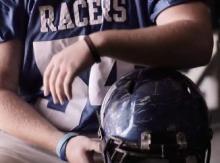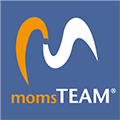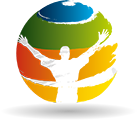
A total of nine football helmets have earned five stars in the 2014 Virginia Tech Helmet Ratings,TM a test of helmets in a laboratory environment intended to measure their effectiveness in reducing the forces that cause concussion.
Critics, especially the National Operating Committee on Standards for Athletic Equipment (NOCSAE), however, continue to argue that the results, while helpful, have limitations.
Riddell's 360, the top rated helmet that past two years, has been knocked from that perch by two helmets from Schutt, the AiR XP Pro VTD and the Vengeance VTD. There are now three 5-rated helmets (awarded to helmets Virginia Tech considers the "best available"[1]) from Xenith (the EPIC, X2, and X2E), and two each from Riddell (the 360 and Revolution Speed) and Rawlings (the Quantum Plus, which made the list in 2013, and a new helmet, the Tachyon).
Two other Rawlings helmets, the Impulse and Quantum, obtained 4-star ratings (classified by Virginia as "very good"), joining a group with two Schutt helmets (Ion 4D and Vengeance), two more Riddell models (Revolution and Revolution IQ), one from Xenith X1, and, leading the group, the SG Adult from a new helmet manufacturer, Simpson-Gnassi, with a background in designing race car helmets.
As in 2013, Schutt continues to hold down all three spots in the 3-star (good) category with its Air XP, DNA-Pro+ (which inexplicably dropped from 4-stars to 3 in 2013; see NOCSAE's "concern" about this change below), and the Air XP Ultralite.
Extensive tests
Virginia Tech's current evaluation process (which it says will change beginning in the fall of 2014) involves performing 120 impact tests on each helmet model at multiple locations and impact energies utilizing the STAR (Summation of Tests for the Analysis of Risk) Evaluation System, which it developed based on data collected from over 1.8-million head impacts experienced by football players over an eight-year period.
According to Virginia Tech, the STAR value is an estimate of the number of concussions that one collegiate player might experience over the course of a season wearing a specific helmet. The lower the STAR value, the better the helmet is believed by Virginia Tech to be in reducing the risk of concussion.
"We recommend any of the four or five star helmets for players. The specific helmet a player chooses will be dependent on other factors such as a fit and comfort," said project director Stefan Duma, the Harry C. Wyatt Professor of Engineering and department head of the Virginia Tech -- Wake Forest School of Biomedical Engineering and Sciences.
Limitations
While the Virginia Tech ratings provide parents with valuable biomechanical data intended to help them make educated decisions about which helmet to purchase, parents and athletes need to be aware that the ratings come with a number of significant limitations:
Ratings currently based only on linear acceleration: Because the 2014 STAR values are based solely on linear (i.e. straight-line) acceleration and do not reflect rotational (i.e. twisting) acceleration, Virginia Tech's rating methodology continues to be heavily criticized,by the National Operating Committee on Standards for Athletic Equipment (NOCSAE).
In a July 2013 statement issued after the 2013 STAR ratings were issued, NOCSAE noted that, "A concussion in football is a very complex event involving different and changing forces, linear and rotational accelerations, helmet fit, player position, impact duration, player concussion history and overall health, and potentially even genetics." It went on to state that "the Virginia Tech Helmet Ratings system approaches the very broad and complex issue of concussion protection from a narrow vantage point of linear accelerations only and does not address other biomechanical variables such as rotational accelerations, particularly where rotational accelerations precede the linear acceleration in a hit. The consensus of scientific experts [1] agree that rotational accelerations are involved in many, if not almost all, concussive events, although no correlated injury threshold for rotational accelerations has been found," the NOCSAE statement continue
Responding to the NOCSAE criticism, Virginia Tech said that, beginning in 2014, the STAR ratings would take into account rotational (e.g. twisting) acceleration as well, based on a research paper published in 2013. As promised, new helmets were added to the STAR ratings in May 2014. STAR ratings for hockey helmets are slated to be published in fall 2014, which will be the first to incorporate the new methodology including rotational acceleration, according to Duma. STAR ratings using the new methodology for football helmets, however, will not be issued until 2015, he told MomsTEAM.
NOCSAE criticism continues
The release by Virginia Tech of its 2014 STAR ratings has been met with continued criticism from NOCSAE. Although applauding and encouraging the growing research in the area of concussion protection for athletes, NOCSAE was once again quick to caution coaches, consumers, and parents that scientific evidence "does not support [Virginia Tech's] claim that a particular helmet brand or model is more effective in reducing the occurrence of concussive events," to point out, as it had in 2013, that the STAR ratings approached the very broad and complex issue of concussion protection from a narrow vantage point of linear accelerations only, and to again remind consumers that the ratings only applied to size large adult helmets.
NOCSAE's longtime Executive Director, Mike Oliver, noted that the STAR ratings were "not standards." Rather, he said, they were a "theoretical method of comparing one helmet against another," and claimed that "many have misunderstood the purpose and limitations of the STAR ratings. A 5-STAR rating does not mean," Oliver said, "that the helmet is great at preventing concussions. It simply means that it might be better than another helmet with a lower rating."
[NOCSAE's helmet standards, which have remained essentially unchanged since first issued in 1976 and which were designed to ensure that helmets protected against skull fractures (which they do) are in the process of being revised to require helmets to limit certain concussion-causing forces, both linear and rotational, with its Board voting at its June 2014 meeting to issue the new standards for public comment until June 2015, at which time, provided there are no revisions, the board is expected to vote to finalize the standard and require implementation by manufacturers by June 2016.]
Oliver went on to claim in the NOCSAE statement that, because of this alleged misunderstanding, the effectiveness of helmets in protecting against concussions has become "exaggerated," taking focus away from steps he said were known to have a more immediate and much greater effect on concussion reduction, such as making sure equipment fits properly, ensuring that young athletes are taught proper blocking and tackling techniques and demanding enforcement of rules that prohibit players from leading with their helmets to hit other players (all of which, it should be noted, are emphasized by MomsTEAM in the Six Pillar approach to concussion risk management featured in its PBS documentary, "The Smartest Team: Making High School Football Safer," and for which we have been advocating for many years).
In addition, NOCSAE pointed to a University of Wisconsin study [8] showing no difference in the rate of concussions or severity of concussions by helmet brand. (for a full article discussing the study in detail, click here.]
Values should be used for comparative purposes only: The STAR value is based on injury probability and should not be interpreted as a literal number of injuries for any one athlete.
Wearing a highly rated helmet will not prevent a player from sustaining a concussion. The Virginia Tech researchers concede that any player can sustain a head injury even with the very best protection, that a "specific person's risk of concussion may vary as a result of a number of factors" having nothing to do with the helmets, including genetic differences (some athletes may be genetically predisposed to concussion), age, health history (e.g. history of migraines, depression or other mental health disorders, attention deficit hyperactivity disorder, learning disabilities, sleep disorders, and/or previous history of concussion), impact factors (e.g. neck muscle strength/weight), style of play, etc.



